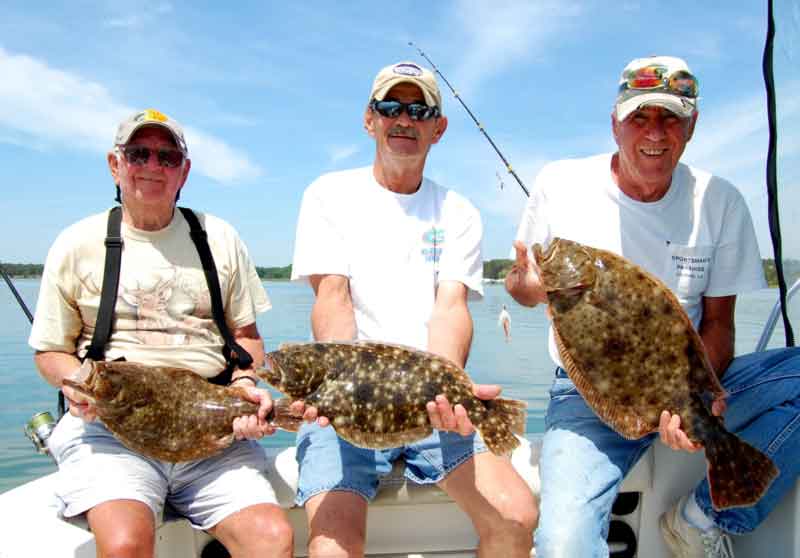The arrival of April means flounder fishing will kick in up and down the coastal bays and inlets, including in well-known flounder hotspots like Wachapreague, VA, and during the early season you’ll often find flounder up on sandy flats and bars in just a couple-few feet of water during flood tides. But catching them on the flats requires employing different tactics than those commonly used in deep water. Plug “flounder” into the search box in the upper right of your screen for a refresher on catching flatties in other places, but if you want to target them up on the flats use this shoal water tactic:

- Pick out a light bucktail in the quarter to half-ounce size range. White, chartreuse, pink, and yellow are all good colors to try.
- Sweeten the bucktail up with a three- or four-inch GULP! shrimp or shad body tail of contrasting color.
- Cast out onto the flat, and let the bucktail hit bottom.
- Hold the rod at the nine o’clock position with the tip pointed directly at the bucktail, reel in all slack line, then jerk the rod tip up to 11 o’clock to make the bucktail hop.
- Slowly lower the rod tip as you reel just fast enough to maintain tension on the line. Never allow any slack in the line or you won’t feel the bucktail hit bottom nor will you be able to detect strikes.
- The moment you feel the bucktail hit bottom, jerk the tip back up again. If you haven’t dropped the rod tip back to nine o’clock by this point, you need to drop (and reel) a little faster on the next hop. If you’ve dropped the tip all the way back down but the bucktail hasn’t hit bottom yet, slow the cadence of your hop-and-retrieve so it has a bit more time to sink before your rod tip reaches nine o’clock.
Your goal: to find the perfect hop-and-retrieve speed that has the bucktail hitting bottom the exact same time your rod tip gets back to nine o’clock, while always maintaining tension on the line. When you feel a hit, immediately set the hook with an eye-crossing swing.